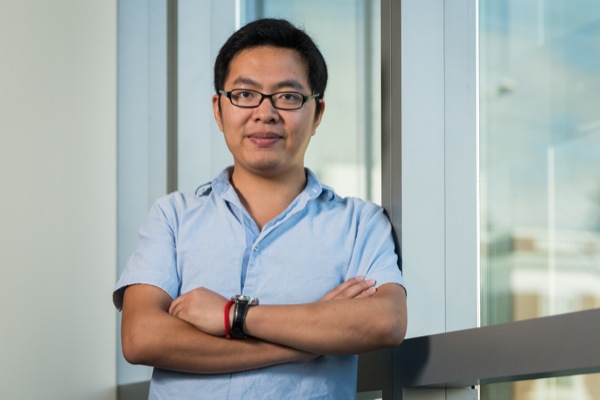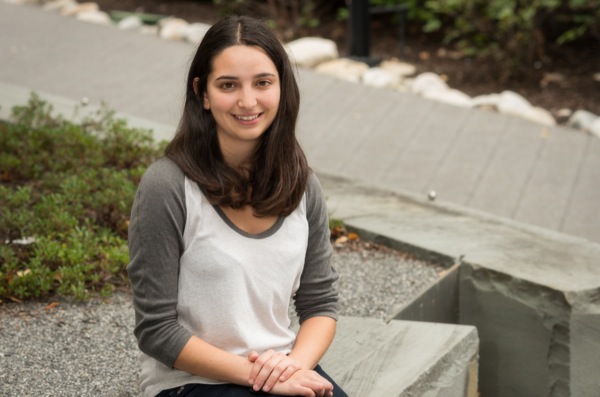Wind energy fellowships
Renewable energy credits from wind turbine are supporting education
9:52 a.m., Oct. 6, 2014--The wind turbine on the University of Delaware’s Hugh R. Sharp Campus in Lewes has yielded many benefits in its first four years of operation, including generating clean energy for the campus and community, helping train students in turbine maintenance, testing new equipment, and supporting research studies.
Now, another important item has been added to that list — supporting fellowships for graduate students working in the wind energy area in the University’s College of Earth, Ocean, and Environment (CEOE).
Research Stories
Chronic wounds
Prof. Heck's legacy
The fellowships are funded through a new three-year agreement with the Delaware Municipal Electric Corporation (DEMEC), which is purchasing renewable energy credits generated by the turbine.
The first two recipients of the UD-DEMEC Graduate Fellowship for Wind Energy Research are Chi Yan and Ali Ponte.
Yan, a doctoral candidate advised by Cristina Archer, associate professor of physical ocean science and engineering, is conducting research in the area of wind turbine physics. His project focuses on the development of a simulation to optimize offshore wind farm layout.
“Numerical simulation results have shown that wind farm performance can be improved substantially by staggering and spacing the turbines,” Yan says. “We’re trying to optimize wind farm layout so that more energy can be harnessed from the same number of turbines — in other words, improving the efficiency — which is very important to development of the renewable energy industry.”
Ponte, who is working on a master’s degree, will focus on Mid-Atlantic continental shelf geological and geophysical data, incorporated with geotechnical data, towards the development of future offshore wind projects. She is advised by John Madsen, associate professor of geological sciences.
“Seabed geotechnical characteristics play a critical role in determining the optimal type and design of foundation used to support turbines,” Ponte says. “Foundations are typically the most expensive feature of offshore wind projects, so this information stimulates continued development by making them more economically feasible.”
According to Madsen, who is also coordinator of educational programs for the Center for Carbon-free Power Integration, the fellowships are augmenting UD’s ability to recruit high-quality graduate students to undertake wind energy research in areas from marine policy and meteorology to geophysical and geotechnical considerations in the marine environment.
“As the use of wind energy grows, it will be critical to increase the number of people with expertise in these areas,” Madsen says. “Our new Graduate Certificate in Wind Power Science, Engineering and Policy is another route to education and training in this area.”
“The technology is changing rapidly, and it’s important to keep up with the latest developments,” he adds. “What sets us apart from other programs is that we’re integrated and interdisciplinary.”
Courses for the certificate are taught by faculty from marine policy, physical ocean science and engineering, mechanical engineering, electrical engineering, geological sciences, and geography.
The certificate is designed for three types of students: current UD graduate students looking for formal recognition of their wind power expertise; students focused on a specific area of wind power research who want coverage of related areas for improved understanding of interacting systems; and working professionals who need to understand more about the wind industry to more effectively do their jobs or seek advancement.
The certificate can be taken in conjunction with a graduate degree in a traditional discipline or as a stand-alone program. For more information, visit the website.
Article by Diane Kukich
Photos by Evan Krape












